The C Sharp Natural Minor Scale Theory
There are three variations of the minor scale: the natural minor, harmonic minor, and melodic minor. For this post, we will focus on the C Sharp Natural Minor Scale, but you can explore the C Sharp Harmonic Minor and C Sharp Melodic Minor in our other articles.
HOW TO CREATE THE C SHARP NATURAL MINOR SCALE
The scale with C Sharp Minor is composed of seven notes, namely C#, D#, E, F#, G#, A, and B. The C Sharp Minor scale is typically notated to begin and end on C#, and it can be played at different octaves. It is classified as a diatonic scale, which indicates that it corresponds to a specific key - in this instance, the key of C# Minor!
All Natural Minor scales adhere to a specific sequence of tones and semitones (also known as steps and half-steps). The tone pattern is as follows: Tone, Semitone, Tone, Tone, Semitone, Tone, Tone. If we begin with the note C and follow this pattern, we will obtain the C Natural Minor Scale. Similarly, to produce the C# Natural Minor scale, we can apply the tone/semitone pattern starting from the note C#. It is worth noting that starting from any note will always yield a minor scale beginning on that note.

C# NATURAL MINOR SCALE ON THE PIANO
As you can see, if we were to play this scale on the piano diagram we only use the white keys.
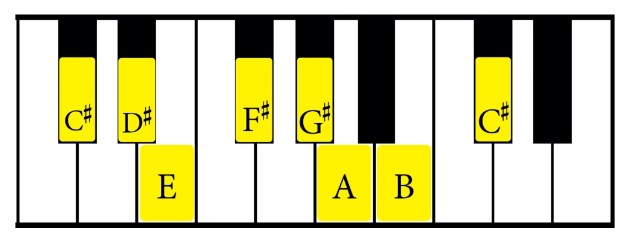
To play this scale on the piano use the fingers written below.
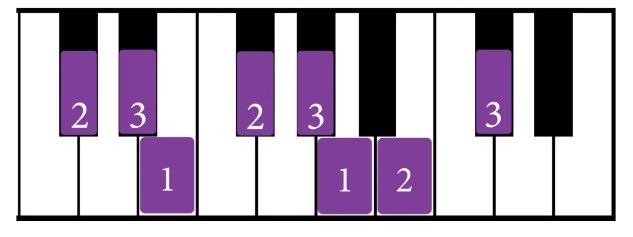
C# NATURAL MINOR SCALE ON THE GUITAR
You can use the tab below to play the C# Natural Minor scale on the guitar
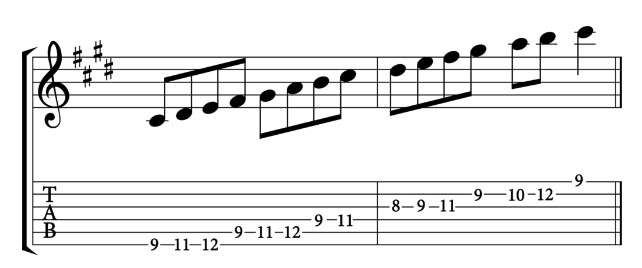
DEGREES OF THE SCALE
Each note within the C# Minor scale is assigned a degree, with the first note being referred to as the "tonic" note.

KEY SIGNATURE FOR C SHARP MINOR
Instead of notating sharp signs on each individual note, we can utilize the key signature. C# Minor is considered the relative minor of E Major. This relationship can be determined by recognizing that C# is the sixth note of the E Major scale.
Consequently, both scales share the same key signature, which consists of four sharps: F#, C#, G#, and D#.
Here is the full scale written out with the key signature.

C SHARP MINOR SCALE IN DIFFERENT CLEFS
Treble Clef
Below is the C# Natural Minor Scale written out in the treble clef, both ascending and descending.
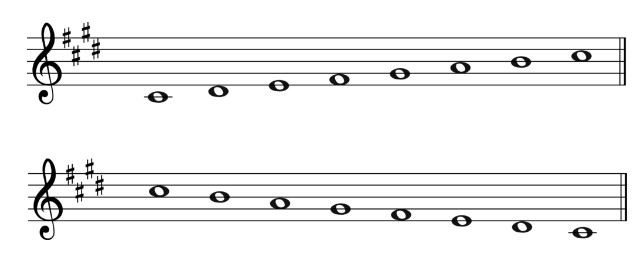
Bass Clef
Below is the C# Natural Minor Scale written out in the bass clef, both ascending and descending.

Alto Clef
Below is the C# Natural Minor Scale written out in the alto clef, both ascending and descending.
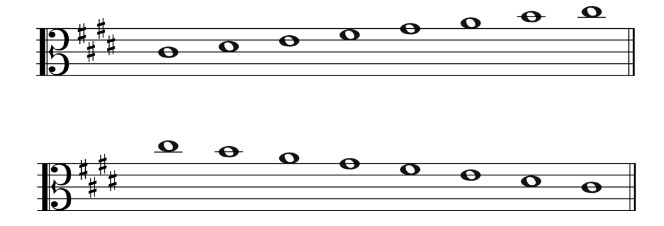
Tenor Clef
Below is the C# Natural Minor Scale written out in the tenor clef, both ascending and descending.

If a musical piece is said to be in the key of C sharp Minor, it implies several things.
- The key signature will contain four sharps (F#, C#, G#, and D#), as the relative major is E major.
- The tonic or root note of the piece will be C sharp, which will sound the most stable throughout the composition.
- The piece will primarily employ notes from this scale, which may be in any octave.
- The chords used will correspond to those chords found within the C sharp Minor scale.
If you’re interested in learning more about music scales, chords, and musical theory, visit our Guitar tunio today








